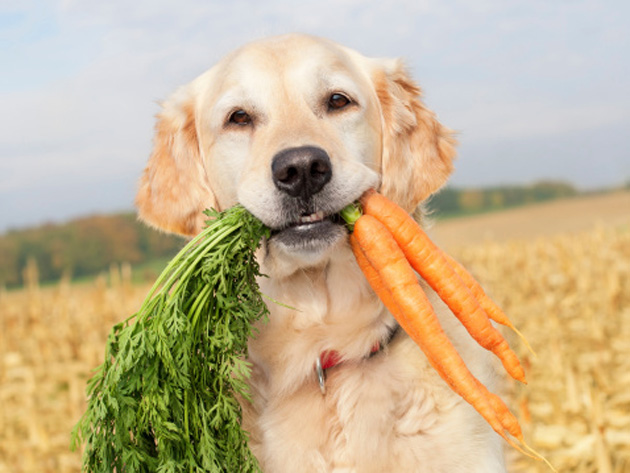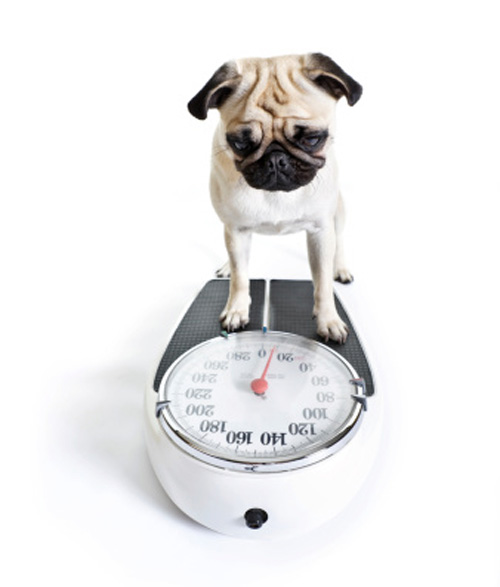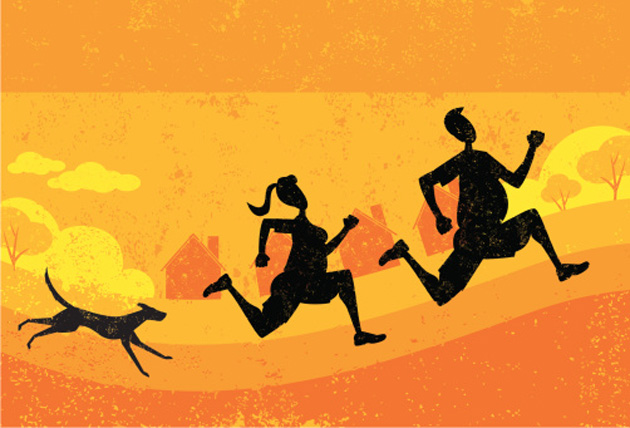Is Your Pet Overweight?

If your pet is piling on too many pounds, we’ve got some tips and tricks to help.
Is your beloved pet a little, well, portly? If so, you’re not alone.
A recent U.S. survey found that a whopping 53 per cent of cats and 55 per cent of dogs are overweight or obese. A recent study by the Association for Pet Obesity Prevention (APOP) looked at data from veterinary clinics across the country. And the results showed that our furry family members are growing — and not in a good way.
“This year’s data suggests that our pets are getting fatter,” APOP founder Dr. Ernie Ward said in a release. “We’re seeing a greater percentage of obese pets than ever before.”
The group began conducting nationwide veterinary surveys in 2007. Since that time it has seen a steady increase of pets that are classified as overweight or obese. (To be considered obese, a pet is at least 30 per cent above normal body weight).
In 2007, for example, about 19 per cent of cats were found to be obese by their veterinarian and in 2010 that number increased to almost 22 per cent. And for dogs, obesity rates nearly doubled from just over 10 per cent in 2007 to 20 per cent in 2010.
According to the most recent numbers available from the Canadian Veterinary Medical Association, 35 per cent of pets were overweight as of 2005. (Interestingly, at this time, nearly the same percentage of people in Canada — 36 per cent — was also considered overweight.)
Like humans, overweight and obese dogs and cats have an increased risk for serious health problems including diabetes, osteoarthritis, kidney disease, gastrointestinal problems, high blood pressure and respiratory problems.
Diet can also affect your pet’s longevity. A study published in the Journal of the American Veterinary Medical Association (2002) found that dogs fed 25 per cent less food lived longer and experienced delayed onset of chronic diseases, compared with a control group.
NEXT: HOW TO SHED UNWANTED PET POUNDS
Shed unwanted pet pounds
Want to help your fat cat or pudgy pooch shed some pounds? For many pets, unhealthy weight gain is a result of taking in too many calories and getting too little exercise. Sound familiar? In many ways, the basic weight loss strategies for pets are much the same as for humans.
Get regular exercise. Regular exercise not only helps to keep your pet (and you) fit, but it’s a great time for bonding and sharing some good old-fashioned fun. How much exercise is enough? According to the Canadian Veterinary Association, dogs should have a brisk walk at least twice daily for 15 to 20 minutes. For cats, schedule at least two 15-minute play times each day. (Note: Your pet should not exercise 30 minutes before or after eating a meal.)
Tips and tricks:
— Start slow. Like us, our pets need to work up to being fit, particularly if they are overweight. Carrying extra pounds puts additional strain on joints, muscles, and the heart and respiratory system. To be on the safe side, you may want to start by visiting your veterinarian for a physical examination and ask for advice on a safe workout regimen for you and your pet.
— Be cautious if you’re biking with your dog. It is a common perception that dogs are born to run, but depending on your dog’s physical condition and fitness level this may not be the case. While a miles-long bike ride on a flat surface is manageable for many people, running that distance is another matter all together. If you do bike with your dog, be alert for any signs of doggy distress such as panting or lagging — and stop to rest if necessary. Heat stroke can happen suddenly, and be fatal. Also watch that your dog’s paws are not being hurt by hard or hot pavement.
— Playtime in the water. Some dogs love to swim, and playing fetch in the water is a great form of exercise. Some dogs, however, don’t like water and can be prone to hypothermia or even drowning. As a precaution, pet life vests — particularly when boating or swimming in deep water — are a good idea.
— Playtime at home or at the park. Games such as blowing bubbles or hide-and-seek can be a simple way to encourage activity. For cats, laser tag, catnip toys, scratching posts, climbing trees and string ‘fishing pole’ toys offer a fun frolic and a good way to get some exercise. (Note: Playtime with string toys should always be supervised. Cats, in particular, love to eat string, rubber bands, ribbon, tinsel, yarn and other string-like objects, which if consumed, can be deadly.) For dogs, old-fashioned games of catch and Frisbee will do the trick. Check out your pet store for new toys and gizmos that make throwing and fetching more fun.
— Change the reward. With our pets, food is often viewed as a reward or a token of affection — which can lead to unhealthy snacking and overeating. Instead, make exercise and playtime your way of rewarding your dog or cat.
 Provide a healthy diet. If you notice your pet is packing on unwanted pounds, it’s a good idea to speak to your veterinarian about dietary choices, since he or she is familiar with your pet and medical history.
Provide a healthy diet. If you notice your pet is packing on unwanted pounds, it’s a good idea to speak to your veterinarian about dietary choices, since he or she is familiar with your pet and medical history.
Tips and tricks
— Scrap the table scraps. Despite the best of intentions, those yummy leftovers and table scraps aren’t always in the best interest of your dog or cat. Leftovers can contribute to unhealthy weight gain — and also cause pets to go off their regular food, which understandably, tastes bland in comparison.
— Control portion size. Your veterinarian can suggest a ‘reduction’ or lower calorie diet for your overweight pet, but in some cases it’s simply a matter of overfeeding at meal times and giving too many treats.
— Try healthier snacks. Many pet snacks are loaded with fat, sugar, food dyes and other unhealthy ingredients. Consider buying smaller sized treats or natural low-calorie snacks such as raw carrots and unbuttered, unsalted air-popped popcorn.
— Feed more frequently. Experts also recommend giving smaller, more frequent meals during the day to boost metabolism and burn more calories.
As with humans, you can give your pet a healthy boost by balancing better eating with daily exercise. And in case you’re still reluctant to put your pampered pet on a diet: keep in mind that an extra eight pounds on a 40-pound dog is like an extra 30 pounds on a 150-pound person!
ON THE WEB
Find out the ideal weight ranges for your pet
READ MORE
Top mistakes pet parents make
Your checklist for healthy pets
Tips for travelling with your pet
10 myths about your pet
Dodge the dander
